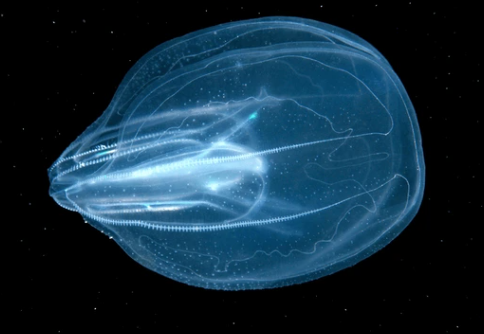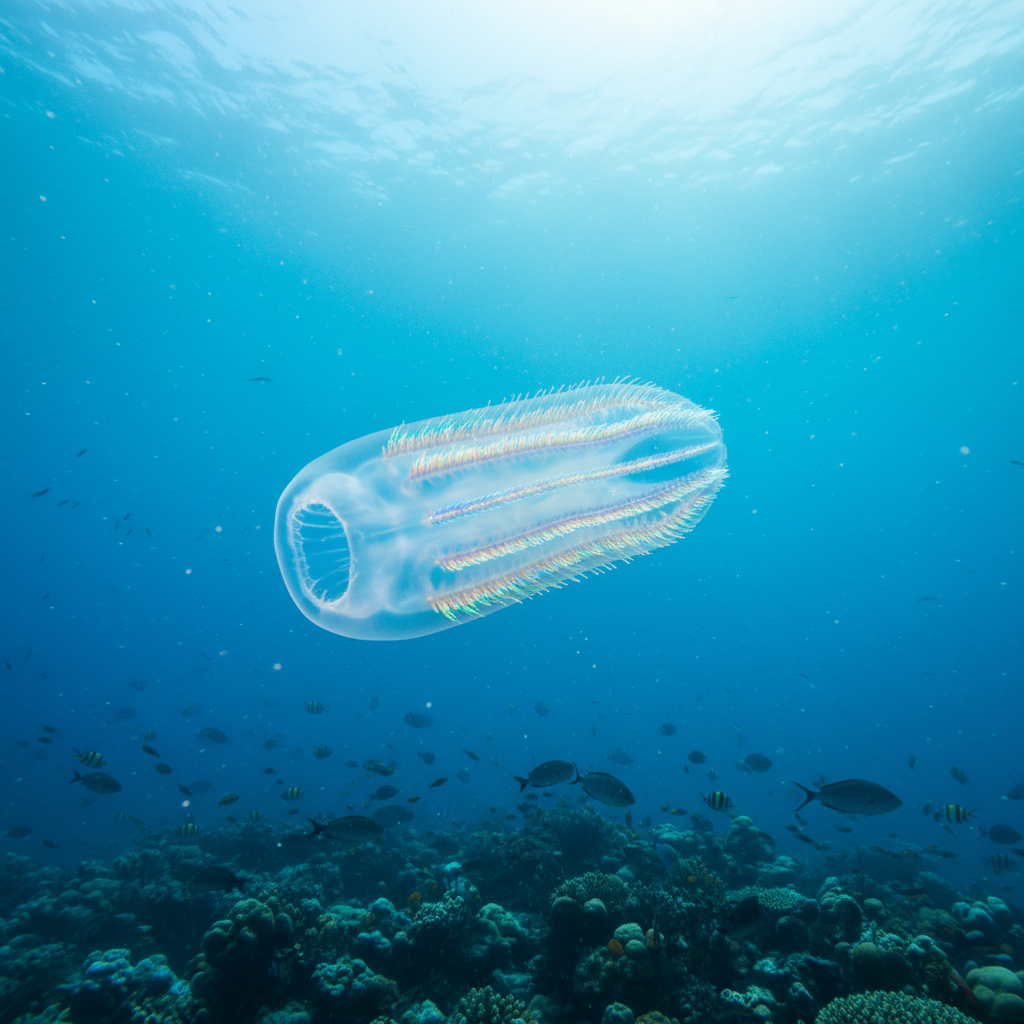Phylum Ctenophora overview
Phylum Ctenophora, commonly known as comb jellies, represents a fascinating group of marine animals renowned for their distinctive locomotion and ecological role in oceans worldwide. The name “ctenophora” originates from the Greek words “ktenos” meaning comb and “phoros” meaning bearer, reflecting the hallmark feature of these creatures—the rows of cilia that resemble combs used for swimming. Unlike their cnidarian relatives such as jellyfish, ctenophores possess unique anatomical and biological features making them a distinct phylum.

Morphology and Body Structure of Ctenophora
Ctenophora are transparent, jelly-like animals whose bodies range in shape from spherical to elongated or ribbon-like forms. They are covered externally by a dual-layered epidermis and internally lined with gastrodermis, separated by a thick jelly-like layer called mesoglea. Ctenophores exhibit biradial symmetry along the oral-aboral axis, making their body plan distinctive compared to other animal phyla.
One of the defining characteristics of ctenophores is the presence of eight rows of fused ciliary plates called “comb rows,” which beat rhythmically to propel the animal gracefully through water. These comb rows are the largest known animal organelles powered by thousands of coordinated cilia, making them the largest known organisms to use cilia for locomotion.
Unlike cnidarians, ctenophores lack nematocysts (stinging cells), but they have specialized adhesive cells called colloblasts located on their tentacles to capture prey. Their digestive system is complete, involving a mouth, a pharynx, stomach-like areas, and a branching canal system to distribute nutrients. A statocyst at the aboral pole helps them maintain equilibrium and navigate through water.
Diversity and Classification of Ctenophora

Comprises around 186 recognized species, divided mainly into two classes:
Class Tentaculata
- Species in this class possess retractable tentacles bearing colloblasts for prey capture.
- They often have paired tentacles and display diverse morphologies.
- Examples include the sea gooseberry (Pleurobrachia) and the sea walnut (Mnemiopsis).
Class Nuda
- Species lack tentacles entirely and are usually larger with barrel-shaped bodies.
- Notable examples are the beroids (genus Beroe), which are voracious predators of other ctenophores.
Their species inhabit all the marine environments, from polar to tropical waters, surface waters to depths exceeding 7000 meters. Their adaptability includes surviving in a wide range of salinities and temperatures.
Reproduction and Life Cycle
They are generally hermaphroditic, possessing both male and female reproductive organs simultaneously. Fertilization typically occurs externally, and development involves a characteristic cydippid larva stage that resembles a miniature adult. Uniquely, ctenophores do not exhibit alternation of generations or asexual reproduction commonly seen in cnidarians.
Ecological Role and Importance
They play a pivotal role in marine food webs and ecosystem dynamics. As voracious predators, they control plankton populations, feeding on zooplankton, larvae, and sometimes even fish eggs, thus influencing the structure of marine communities.
Some, such as Mnemiopsis leidyi, have become invasive species in certain areas (e.g., the Black Sea), disrupting local fisheries by consuming significant amounts of fish larvae and competing with native species.
Moreover, They contribute to bioluminescence in oceans, producing mesmerizing light displays that serve various ecological functions such as predator avoidance and prey attraction.

Adaptations of Ctenophora
The evolutionary success of ctenophores is attributed to their unique adaptations:
- Efficient locomotion by ciliated comb rows allows silent and continuous swimming.
- Colloblasts provide an effective but non-stinging method for prey capture.
- Ability to survive in diverse and extreme marine conditions.
- Bioluminescence enhances survival and communication.
Human Interactions and Research Significance
While They do not have direct commercial value like fish or corals, they are vital for scientific research. They serve as a crucial model for studying:
- Developmental biology due to their simple tissue structure.
- Neural and sensory system evolution, as they possess a nerve net but lack a centralized brain.
- Regeneration and wound healing capabilities.
Recent genomic studies highlight the unique evolutionary position of ctenophores, challenging traditional views on the origins of nervous systems.
Conservation and Environmental Concerns
Their populations are indicators of marine ecosystem health. Environmental changes such as warming waters, pollution, and overfishing can alter their abundance, often with cascading ecological effects. Managing invasive ctenophore populations is critical to preserving fisheries and biodiversity.
Conclusion
This is a distinct and ecologically vital group of marine invertebrates whose unique morphology, locomotion, and predatory strategies enrich ocean ecosystems. They exemplify evolutionary innovation with their ciliated comb rows and adhesive prey capture methods. Understanding ctenophores deepens insights into marine biodiversity, ecosystem balance, and evolutionary biology.
References
- https://en.wikipedia.org/wiki/Ctenophora
- https://byjus.com/neet/ctenophora-notes/
- https://ucmp.berkeley.edu/cnidaria/ctenophora.html
- https://zsi.gov.in/uploads/documents/checklist/hindi/022_CTENOPHORA.pdf
- https://microbenotes.com/phylum-ctenophora/
- https://study.com/learn/lesson/cnidaria-ctenophora-characteristics-habitat.html
- https://www.sciencedirect.com/science/article/pii/S0960982208012918
- https://www.embibe.com/exams/phylum-ctenophora/
- https://elearning.raghunathpurcollege.ac.in/files/3175C7DF16092293541.pdf
- https://ctenophoras.weebly.com/importance.html
- https://www.britannica.com/animal/ctenophore
- https://www.slideshare.net/slideshow/ctenophora-252340607/252340607
- https://animaldiversity.org/accounts/Ctenophora/
- https://www.sciencedirect.com/topics/agricultural-and-biological-sciences/ctenophora
- https://dhingcollegeonline.co.in/attendence/classnotes/files/1603976689.pdf

Pingback: Cestum | Zoologyverse | 2025
Pingback: Ctenoplana | Zoologyverse | 2025
Pingback: Tjalfiella | Zoologyverse | 2025
Pingback: Beroe | Zoologyverse | 2025